
AMSTERDAM MUSEUM

A visitor at the Amsterdam Museum’s exhibition “Ferdinand Bol and Govert Flinck: Rembrandt’s Master Pupils” on Oct. 12, 2017. The painting on the right, “Issac Blessing Jacob” (1634), by Govert Flinck, was completed after Flinck’s initial training. He painted the second version (below) after his apprenticeship with Rembrandt.
SUSANNE W. LAMM
AMSTERDAM—History might relegate artists Covert Flinck and Ferdinand Bol to the roles of Rembrandt’s disciples, but in their own day, they surpassed their master’s fame. When public interest in Rembrandt subsided after reaching its peak with his painting “The Night Watch” in 1642, the careers of Flinck and Bol were just taking off. The pair are currently the subject of two major exhibitions in Amsterdam jointly named “Ferdinand Bol and Covert Flinck: Rembrandt, Master Pupils.”
In Amsterdam, the 17th century is never far away. The old city center still stands, with its slender stone buildings, narrow streets, and ubiquitous canals. The city’s strategic location made it one of Europe’s most important trade centers, and as money rolled in, the art market, among many other ventures, blossomed. In the article “From Rembrandt to Vermeer: Civil Values in 17th-Century Flemish and Dutch Painting,” Bernt Lindemann says that an estimated five million paintings were produced in the Netherlands In the 17th century alone.
PUBLIC DOMAIN
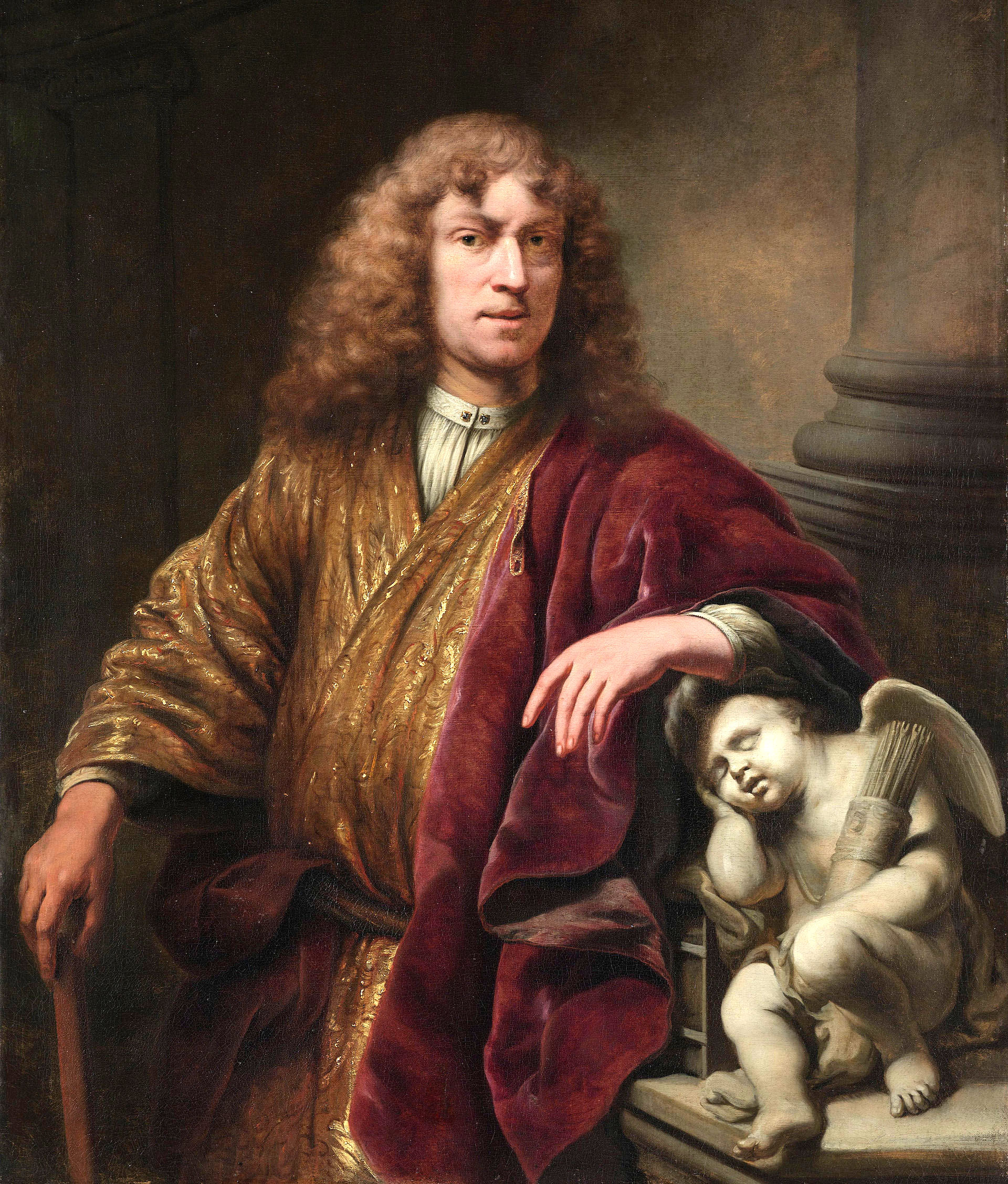
Ferdinand Bol’s final self-portralt, 1669, with a sleeping cupid. Bol’s style never strayed as far from Rembrandt’s as his contemporary Govert Flinck’s did.
PUBLIC DOMAIN

The second version of “Isaac Blessing Jacob” by Govert Finck, painted sometime after 1638, shows the influence of Rembrandt.
Currently, the Amsterdam Museum is highlighting the mature works of Covert Flinck (1615-1660) and Ferdinand Bol (1616-1680), while the Rembrandt House Museum, a mere half-hour’s walk away, is focusing on paintings from Flinck’s and Bol’s formative years as pupils of the great Rembrandt van Rijn (1606-1669).
Borrowing works from museums and private collections all over the world, the exhibitions include small etchings, historical paintings, portraits, and monumental paintings with biblical subjects.
Govert Flinck and Ferdinand Bol didn’t study with Rembrandt at the same time, but both sought him out at the zenith of his career.
There were two genres typical of the Netherlands at that time: group portaits of various guilds and “tronies.” According to the exhibition book, put out jointly by the Rembrandt House Museum and Amsterdam Museum, the tronie was important in the oeuvres of both Bol and Flinck. The Dutch word may refer to “head,” “face,” or “expression,” but although these works were painted from live models, they were, unlike portraits, concerned with expressing something about humanity: “youth or old age, wisdom or grief, faith or mortality.” Therefore, the painter was freer to demonstrate broader themes and his mastery of the medium.
These rich and sometimes sprawling paintings (especially the group portraits) provide a unique look at the Golden Age in Amsterdam, and at the transition from Renaissance and Baroque art to a more classical style. These artists were two of the Netherlands most important painters making that transition.
The entire Rembrandt House Museum can be said to form a part of the exhibition. The house near Waterlooplein, where Rembrandt, bankrupt in his old age, lived and worked (from 1639 to 1658) is now a museum with a recreated 17th-century interior.
Rembrandt’s etching room has been reconstructed, as well as his large prop collection and the studio on the third floor, where the light from the northern window illuminates the easel in the middle of the room. In the attic above Rembrandt’s studio are four ministudios for his pupils. Flinck is believed to have stayed with Rembrandt for 18 months, while Bol stayed for four years.
Flinck and Bol didn’t study with Rembrandt at the same time, but both sought him out at the zenith of his career. In the artistic community, Rembrandt was renowned for his mastery of composition and modeling, and for his ability to render surfaces, textures, and the emotional expressions of his subjects. Flinck and Bol would have already learned basic techniques at other artists’ studios.
Flinck, especially, was already at an advanced level when he came to Rembrandt. David de Witt, curator and conservationist at the Rembrandt House Museum, writes in “Ferdinand Bol and Govert Flinck” that Flinck had a clear motive for his discipleship: He wanted to adapt his style to the latest fashion. Everyone praised Rembrandt at the time, “so that everything had to be done in that manner if it were to please the world,” as Flinck supposedly put it.
Teaching and work went hand in hand in the 17th century. The skilled pupils’ copies could be sold to bring in money, and these artists also assisted the master in various ways. But in order to contribute to the production in Rembrandt’s studio, the pupils first had to master his style, and they would spend a lot of time copying the master's existing works to learn his techniques.
Copying masterpieces gave students insight into composition, color arrangement, chiaroscuro, handling surfaces and textures, and applying thick and thin paint. Samuel van Hoogstraten, another of Rembrandt’s pupils, who replaced Bol when he left the studio, would later write a painter’s handbook. Rembrandt expert Ernst van de Wetering’s book “Rembrandt: The Artist Thinking” quotes van Hoogstraten's description of discipline in Rembrandt’s studio: “When I sometimes annoyed my master Rembrandt, by asking too much for reasons [the rationale underlying particular rules] he had a very good answer: Just accept and apply in your work what you already know, and then the hidden truths that you now ask for will be revealed in due course.”
This was a common pedagogic principle at the time, in other areas as well. Van Hoogstraten sums it up: “You pupils [...] should not only obey your Masters, you should also believe in their teaching. Whoever wants to learn from the mouth of his Master must imitate the same, without any querying it, until he has well and truly understood what he has been taught.”
Ferdinand Bol would become a Rembrandtesque virtuoso. His gradual development under Rembrandt culminated in the painting “Gideon’s Sacrifice” in 1640, of which he also produced an etching.
PUBLIC DOMAIN
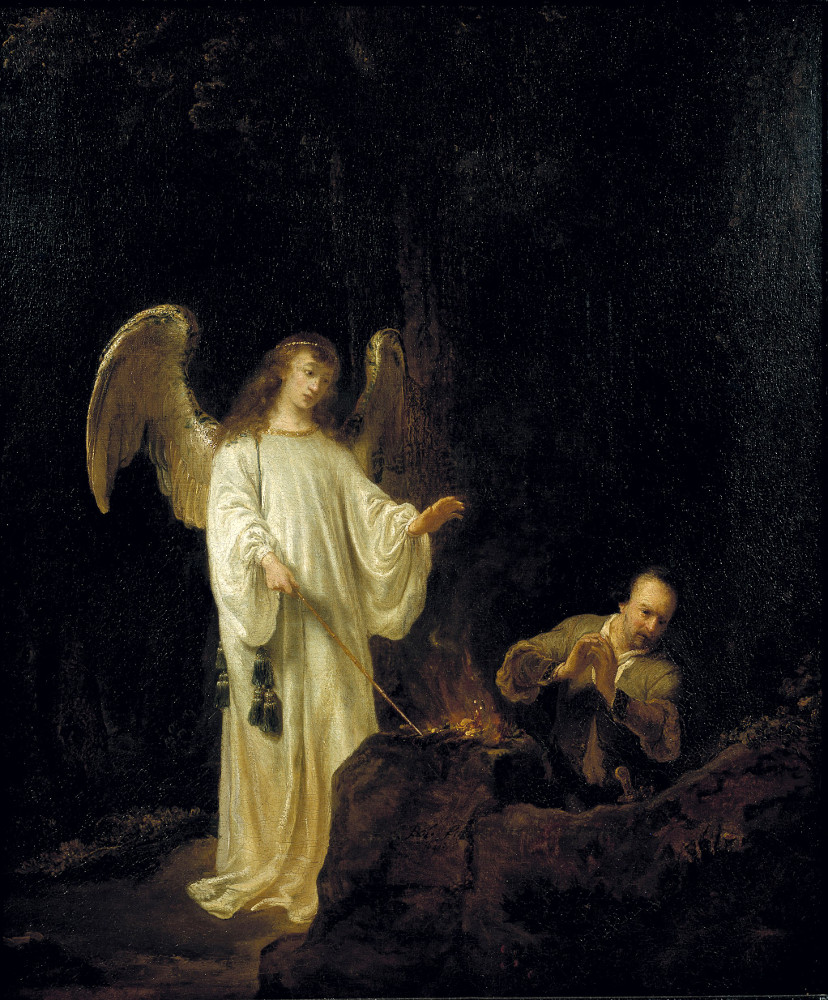
“Gideon’s Sacrifice,” 1640, is the earliest known signed, independent work by Ferdinand Bol. It shows the influence of Rembrandt in the highly expressive face of Gideon as his sacrifice is lit by an angel.
AMSTERDAM MUSEUM
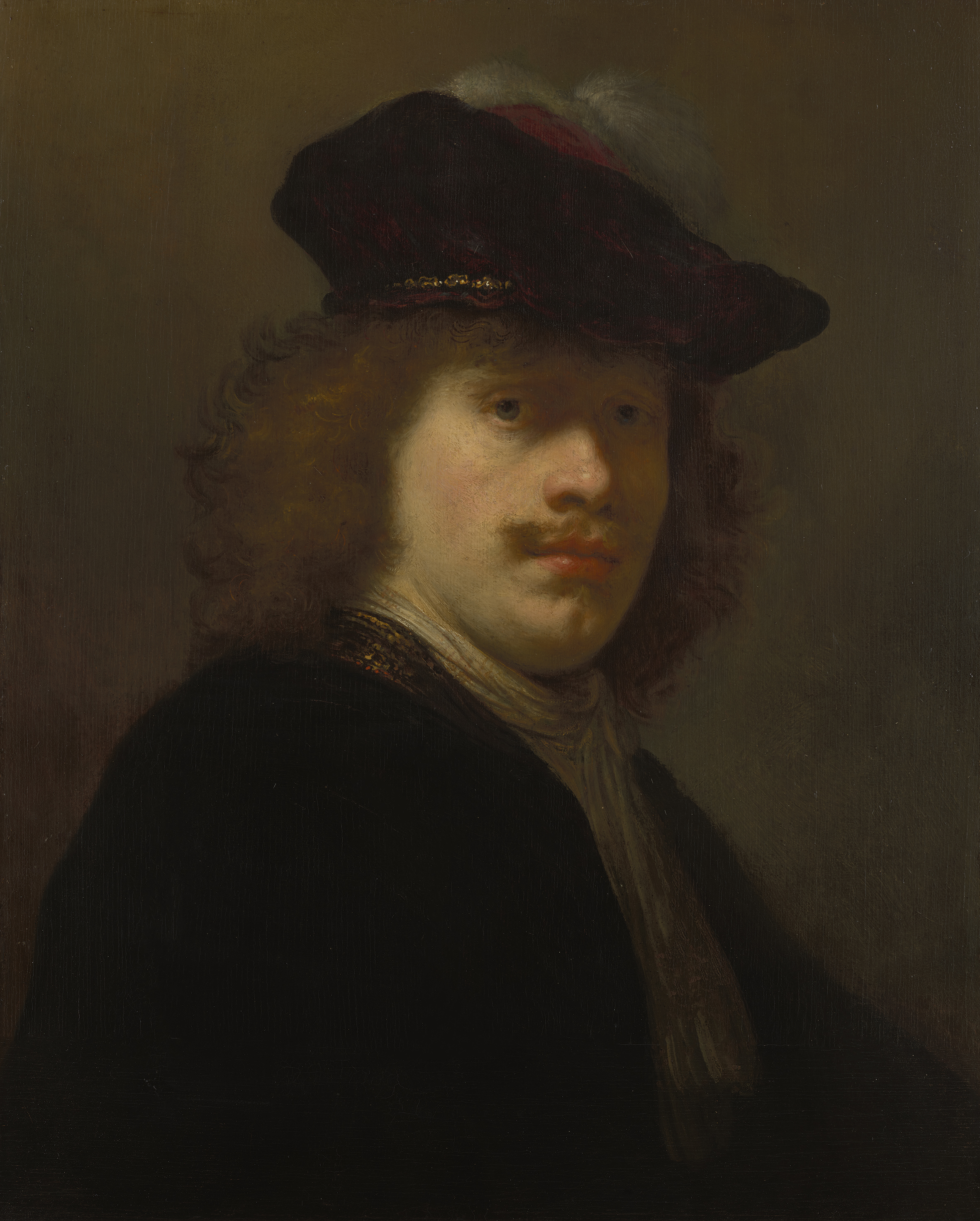
Self-portrait, circa 1640, by Govert Flinck.
Bol did not experiment as keenly as Flinck, who consistently displayed a wide artistic range. For example, in 1636 Flinck painted two tronies: one of Rembrandt and one of his wife, Saskia, as shepherds; even though they are a set, each was deliberately painted in a different style. Hanging side by side in the first room of the Rembrandt House Museum’s exhibition, the painting of Rembrandt is rendered in cool, blue tones and soft strokes, reflecting the new trend of pastoral themes at the time. The picture of Rembrandt’s wife, Saskia, is more Rembrandtesque, with its brown tones and shaded eyes.
It’s obvious that Flinck picked up on Rembrandt’s knack for composition and storytelling when comparing the two versions of “Isaac Blessing Jacob” that hang side by side on the ground floor of the Rembrandt House Museum. The biblical motif tells of how Jacob, pretending to be his brother Esau, tricks his blind father into blessing him instead of his brother. In order to mimic Esau’s hairy arms, he wears long gloves of animal hide, an idea that the two brothers’ mother, Rebecca, who also sits behind the bed, came up with.
Flinck made the first painting in 1634, at the end of his basic training with the painter Lambert Lacobsz in Leeuwarden. It is unclear exactly when the second painting was made, but it would have been a few years after Flinck left Rembrandt’s studio, while he was still heavily influenced by the master’s style. Both the brush technique and the quality of the storytelling—especially the clear relationships between characters—are very Rembrandtesque, even though Flinck had introduced a lighter palette with brighter colors than Rembrandt’s deep, brown tones.
PUBLIC DOMAIN
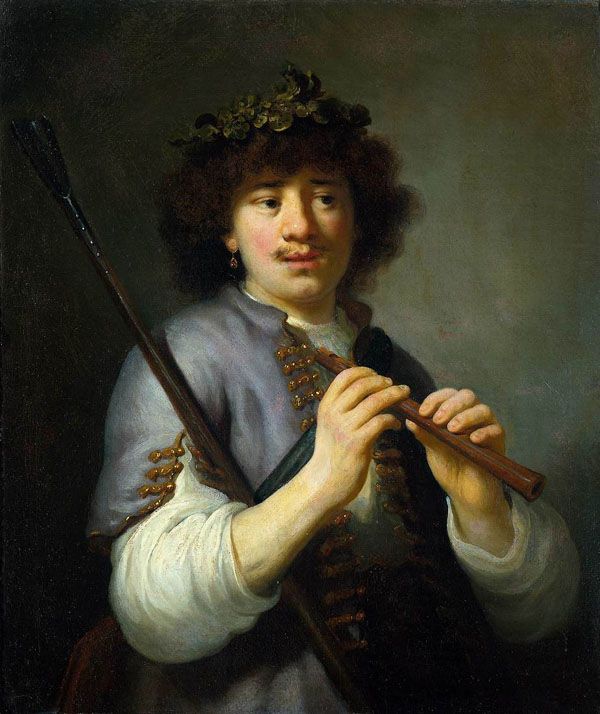
HERZOG ANTON ULRICH-MUSEUM
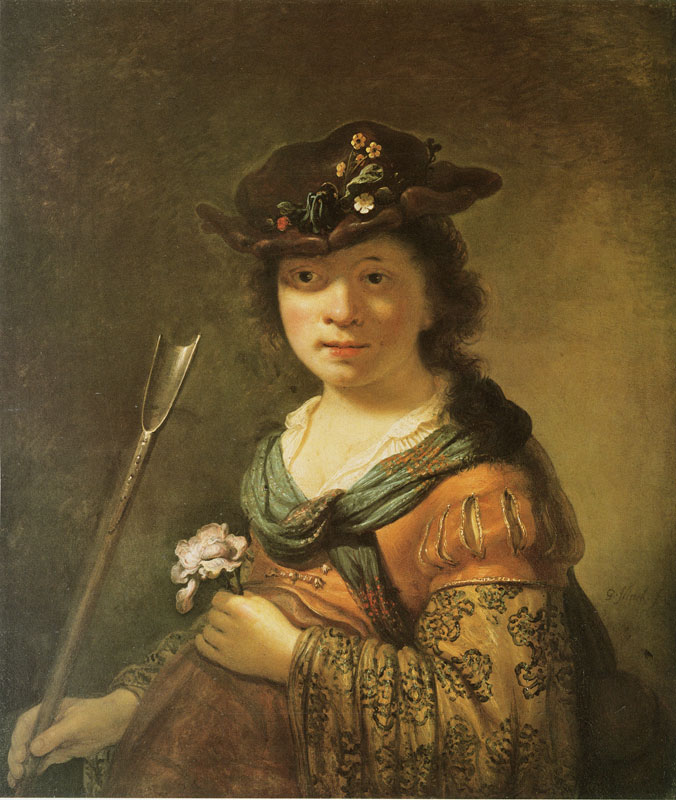
Govert Flinck’s paintings of Rembrandt and his wife, Saskia, as a shepherd and shepherdess, 1636. The pair of paintings demonstrate Flinck’s choosing different styles in his tronies of character studies.
Both Govert Flinck and Ferdinand Bol left Rembrandt’s style in the mid-1640s. According to de Witt, both artists networked with the ruling class and developed a style that fit the needs of the elite, following the trend of large-scale history paintings intended to hang permanently in both private and public spaces.
Rembrandt, for his part, focused on his network of connoisseurs and made small, full-length portraits. His paintings were sold at high prices, but Flinck and Bol got the important commissions from society’s elite. At this time, both artists developed a more classical style: brighter than Rembrandt’s, with “welstand” (elegance and propriety) as a central concept.
In addition to painting historical works, they received commissions from institutions in Amsterdam for large group portraits. Bol painted many group portraits for charities and educational institutions, while Flinck painted the city’s militias.
Flinck developed his very own “bright” style, which brought him huge success in the upper echelons of Amsterdam, as well as the courts in Berlin, Cleves, and The Hague. Meanwhile, he kept certain techniques he had learned at Rembrandt’s studio, such as “houding.” Houding, as art professor Eric Jan Sluijter writes in “Ferdinand Bol and Govert Flinck,” is to “create a convincing suggestion of space between figures relative to one another through an accurately observed and carefully tuned interplay of light, color and tone.”
Govert Flinck had a clear motive to his discipleship with Rembrand: He wanted to adapt his style to the latest fashion.
Bol remained closer to Rembrandt in his style and never abandoned the strong shadows that make his figures pop out of the canvas. But he adapted his style depending on the needs. For mythological and pastoral themes, he used bright, clear colors, while he rendered biblical scenes in muted tones, with heavy shadows.
Even though Rernbrandt was still considered the greater artist by art connoisseurs of the day, Bol and Flinck reached an unprecedented status with their individual styles. Simply put, they made the kind of art the elite craved.
In November of 1659, Flinck received a commission that would have been his biggest to date. It was, in fact, the biggest commission for a public work of art that any Dutch painter had ever received: painting the Batavian cycle at the lunettes of the grand gallery in City Hall. He had six years to complete the 18-by-18-foot canvases and four half-moon-shaped scenes with biblical heroes, above the entrance to City Hall. But Flinck died only two months later and was thus never able to complete the commission.
Bol’s work adorned city halls and public spaces throughout the 1660s, but eventually, he re-tired. In 1669, he painted himself in his last self-portrait: a successful man leaning against a sleeping cupid.
To see more of Govert and Ferdinand Bol's painting visit bit.ly/RembrandtsPupils
The exhibition “Ferdinand Bol and Govert Flinck: Rembrandt’s Master Pupils” in Amsterdam closes on Feb. 18.